Inside the band’s East Nashville studio, we zoom in on the multi-instrumentalist’s string-driven things.
Mike Harris says he “Forrest Gump-ed” his way into the Grammy-winning Americana string band Old Crow Medicine Show when he was drafted to join in January 2021. But rather than picking his spot in the group from life’s box of chocolates, Harris’ initial connection was his friendship with drummer Jerry Pentecost. He quickly proved himself an important member of the Nashville-based outfit of “Wagon Wheel” fame, thanks to his flexible guitar, mandolin, banjo, resonator, and vocal abilities.
Harris invited PG to Old Crow Medicine Show’s East Nashville studio, where they recorded their latest album, Paint This Town, for some show-and-tell about his favorite traveling and recording instruments.
Brought to you by D’Addario XS Strings.
Tale-Telling Tele

Mike Harris’ main electric instrument in Old Crow Medicine Show is his well-loved 1968 Fender Telecaster with a maple-cap fretboard. The guitar has had a few changes over the past 54 years—the biggest is its Lollar neck pickup—but is mostly stock.
From Fessler’s Lane
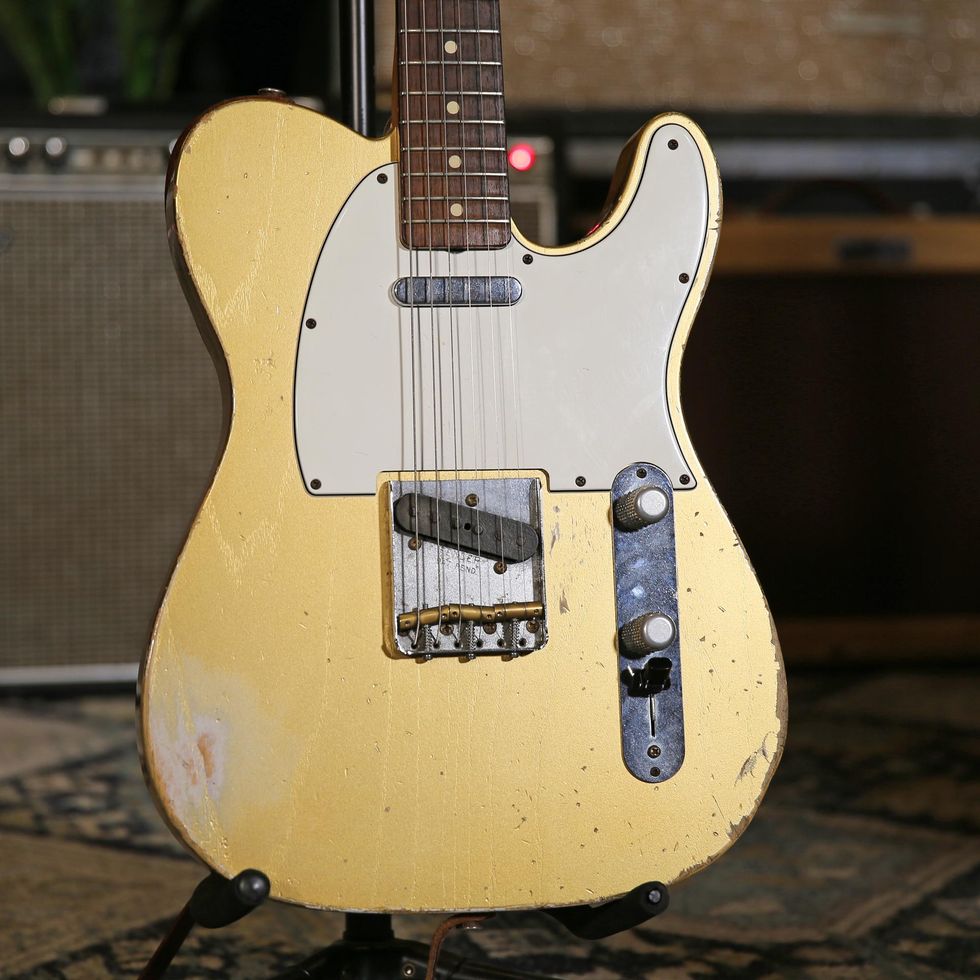
Famed Fender luthier Greg Fessler, who’s made guitars for Robben Ford and many others, created this Custom Shop ’62 Tele in 2017. The speed dials and saddles are by notable vintage-style parts maker (and builder) Glendale Guitars of Arlington, Texas.
Gift Jag
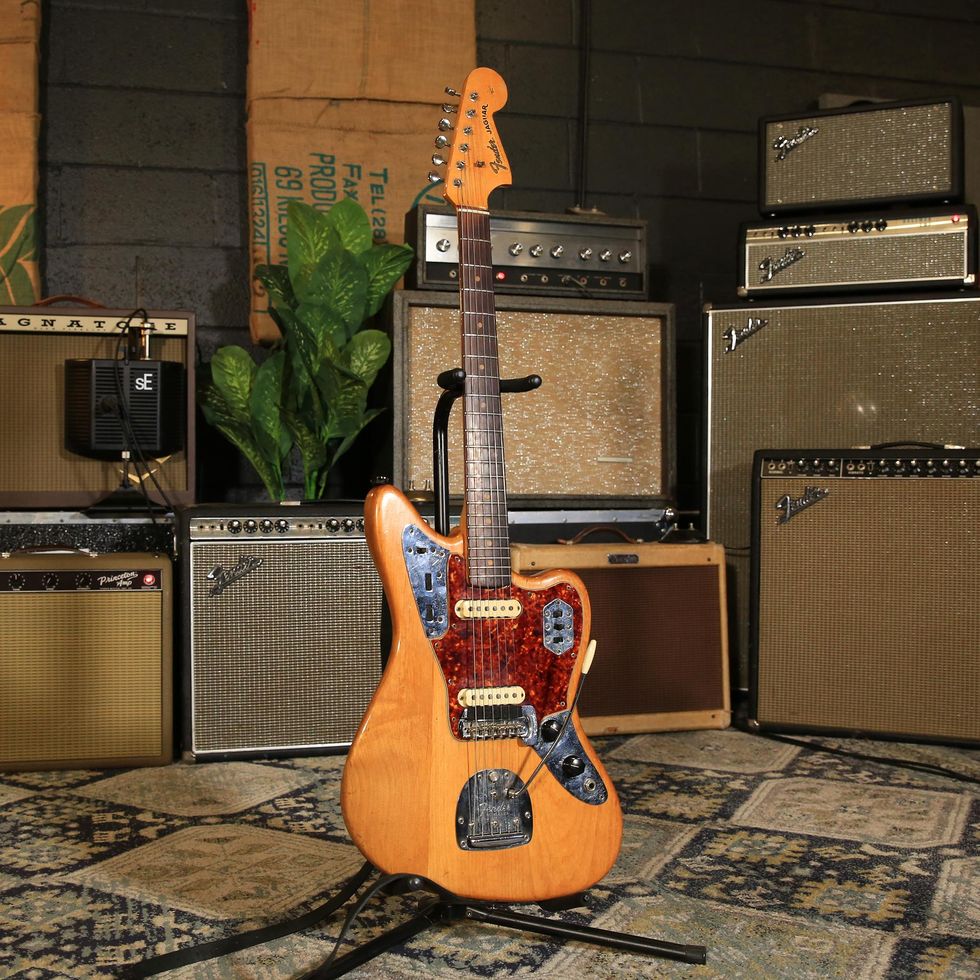
This stripped 1964 Fender Jaguar was a gift from Chris Stapleton. The tuners and bridge have been upgraded, which is common for pro-player Jags.
Harris’ Martin
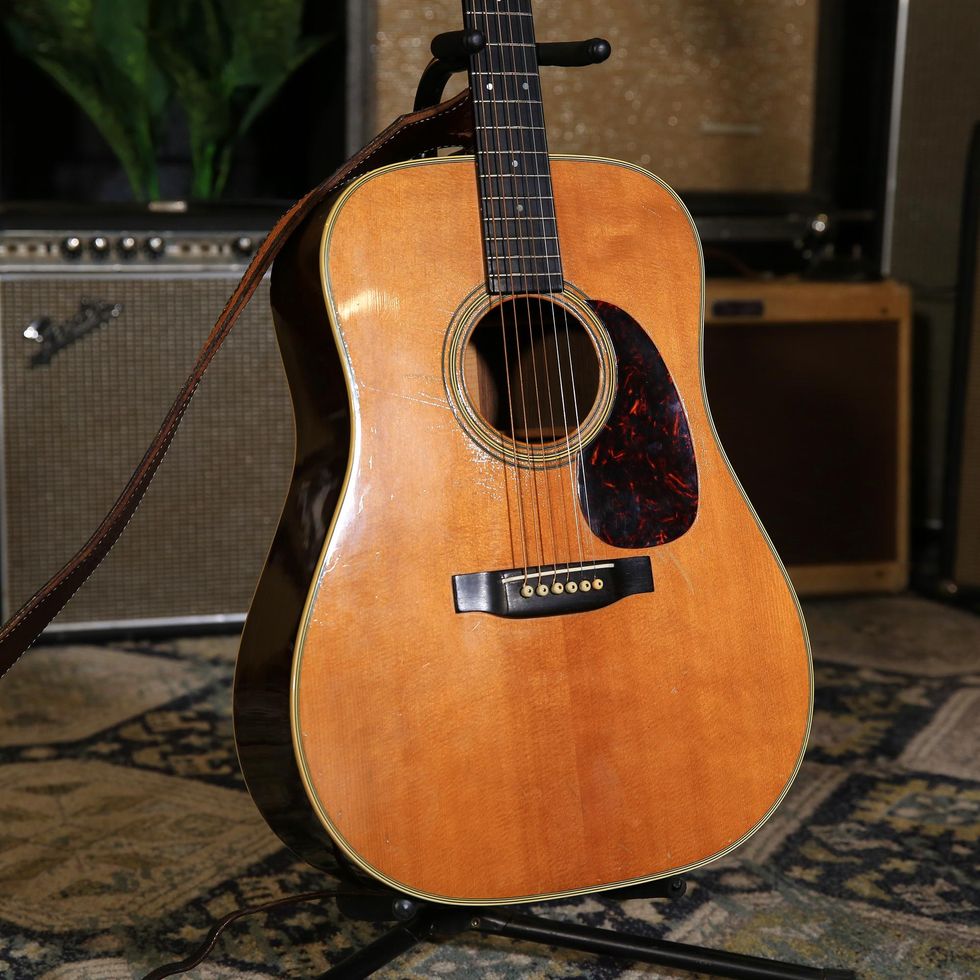
For a guitarist in Old Crow Medicine show, a classic Martin seems like a requirement. Harris’ 1960 D-28 features a Brazilian rosewood back and sides. The headstock has been repaired and a bridge plate saver installed.
Mondo Mando
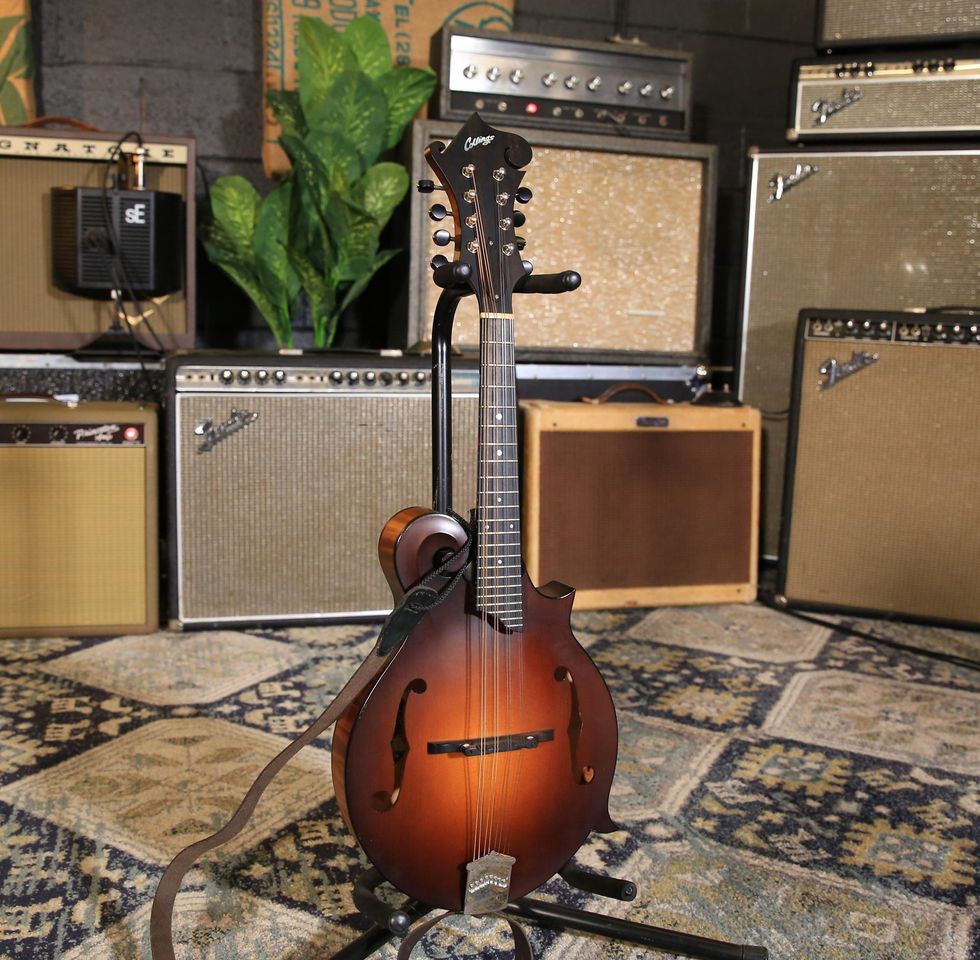
This Collings MF Mandolin features an Adirondack spruce top and an Eastern flamed maple back and sides. It has a V-shaped neck and wide string spacing, for easy finger placement. Harris has a Fishman pickup installed.
Barking Banjo
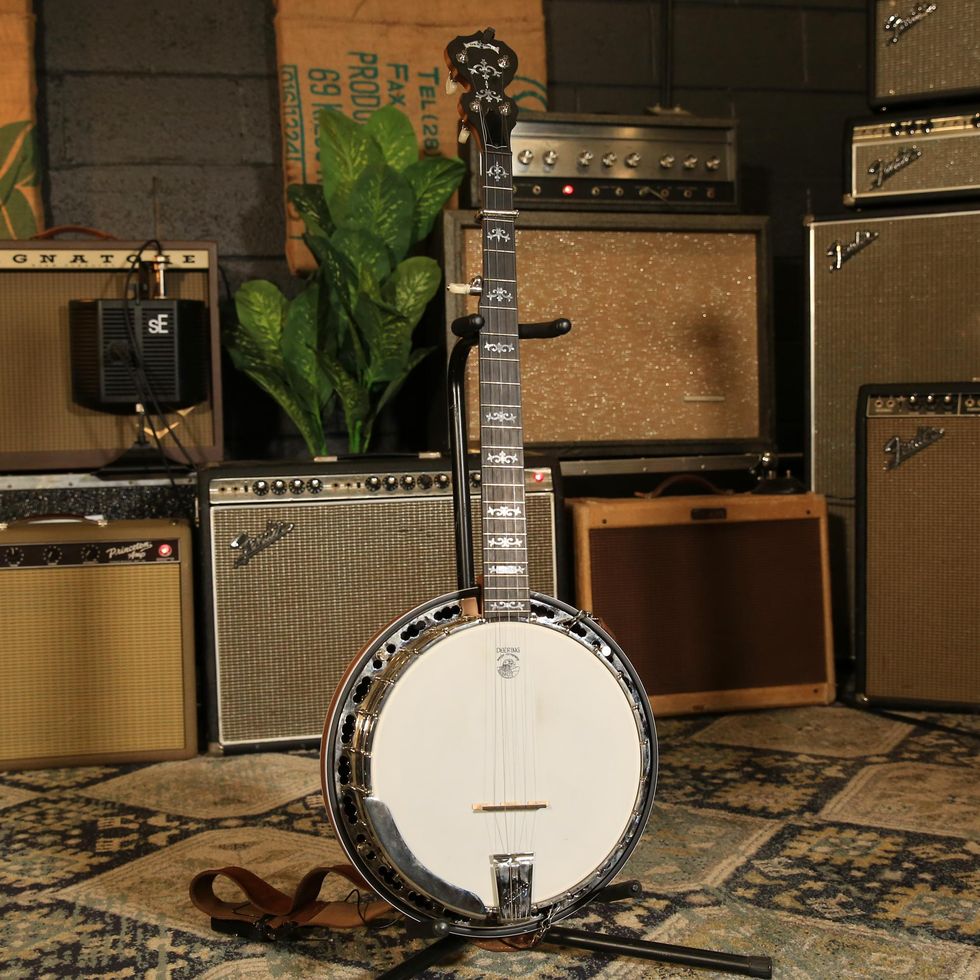
Amplifying a banjo can be tricky, so Harris has a microphone installed behind the head of this Deering Sierra model.
A “Handy” Les Paul
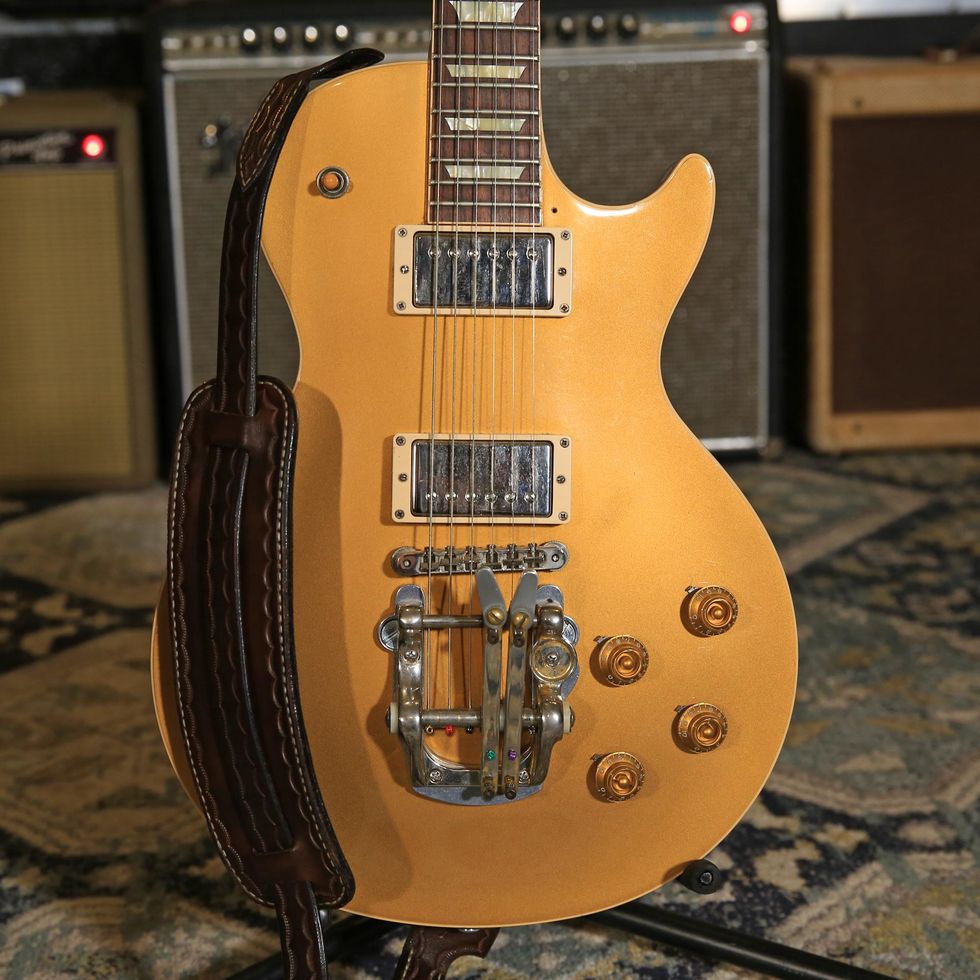
This 2012 Gibson R7 Les Paul has a mahogany top, Seymour Duncan Pearly Gates pickups, and a Bigsby BP-15 palm-pedal tailpiece installed with a Vibramate V5 bridge plate. The R, by the way, stands for reissue, and the 7 designates 1957 as the year of origin for the guitar that inspired this goldtop.
Here’s Pearly!
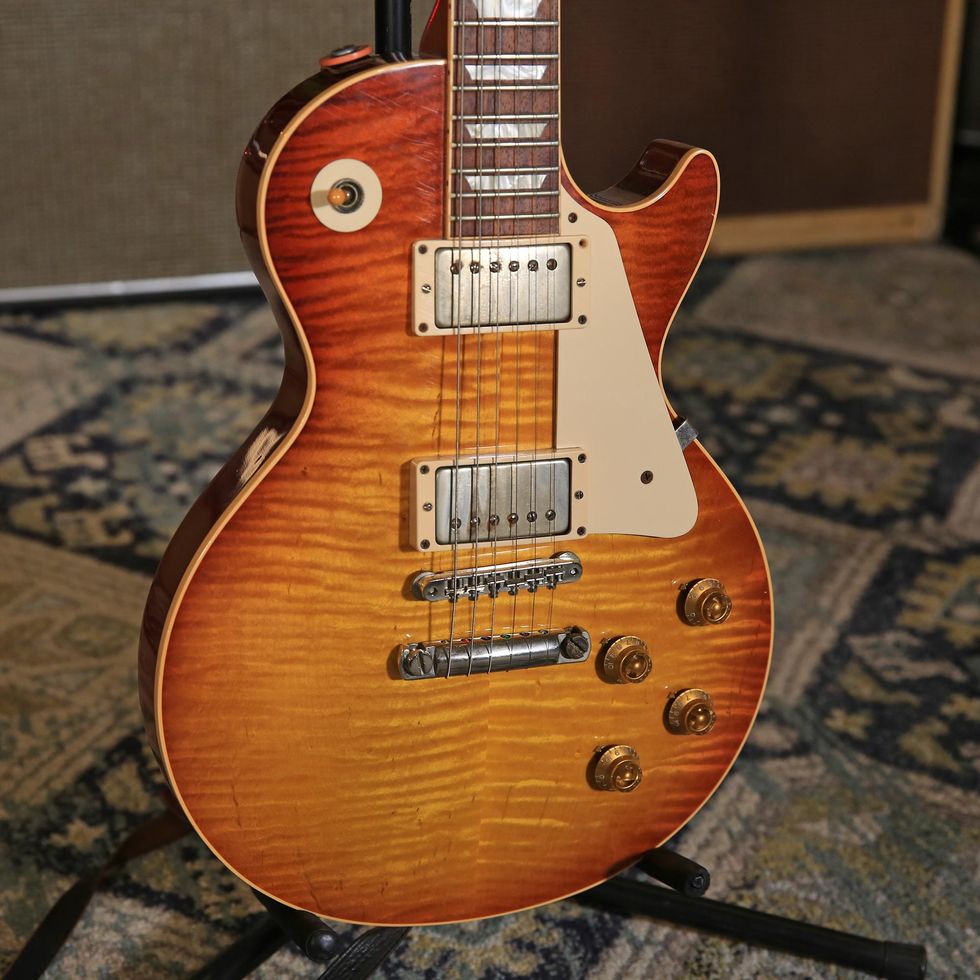
The Rev. William F. Gibbons’ very own monster ’59, dubbed Pearly Gates, is the inspiration for this Gibson reissue. Of course, it also sports a pair of Seymour Duncan Pearly Gates Pickups. Only 350 of these came out of the Gibson Custom Shop in 2009.
Meteor Shower
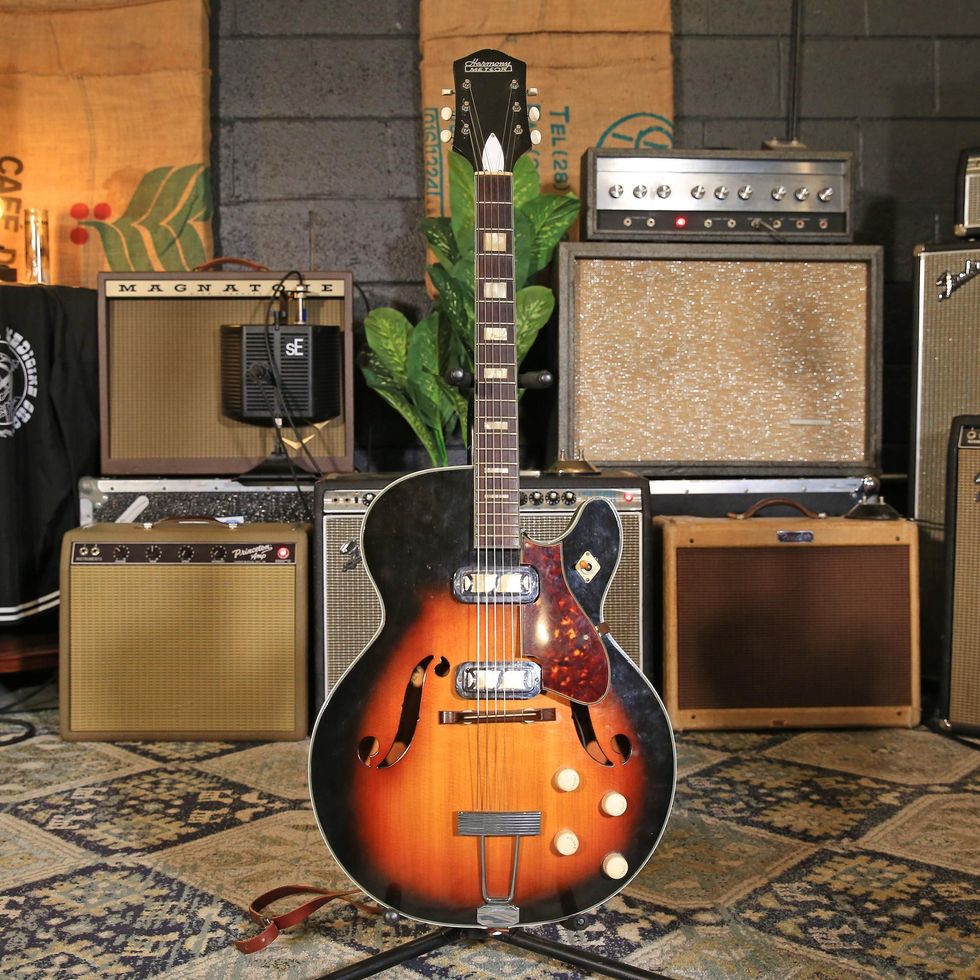
This mid-1960s Harmony Meteor actually belongs to Harris’ great uncle, Howard. True to its birth-era, the guitar stays strung with flatwounds. It also possesses its original D’Armond-made gold-foil pickups, which were introduced with this model back in the day.
I’ll Have a PBR
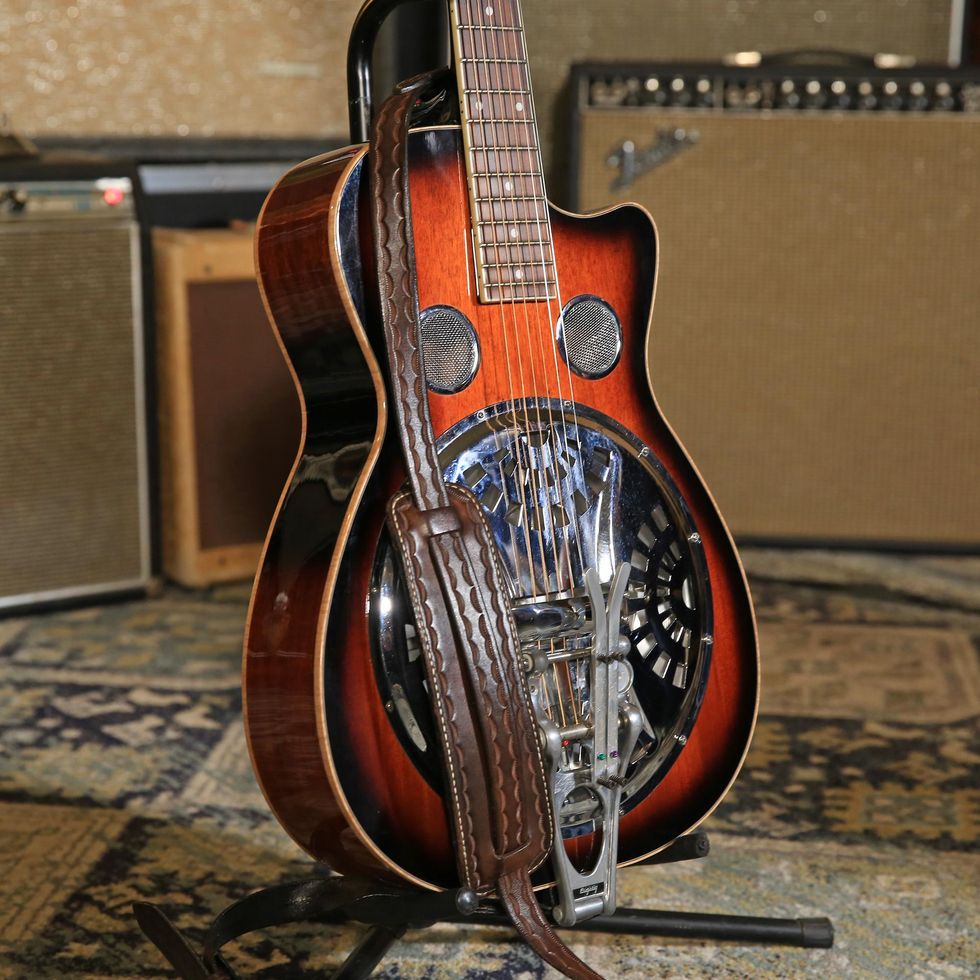
This Gold Tone PBR Paul Beard Signature-Series Roundneck Resonator with a cutaway gets carried to the PA via a Fishman Nashville Series spider-style resonator pickup. Harris always plays the guitar through a Fishman Jerry Douglas Signature Aura Acoustic Imaging pedal.
Reso-Whammy
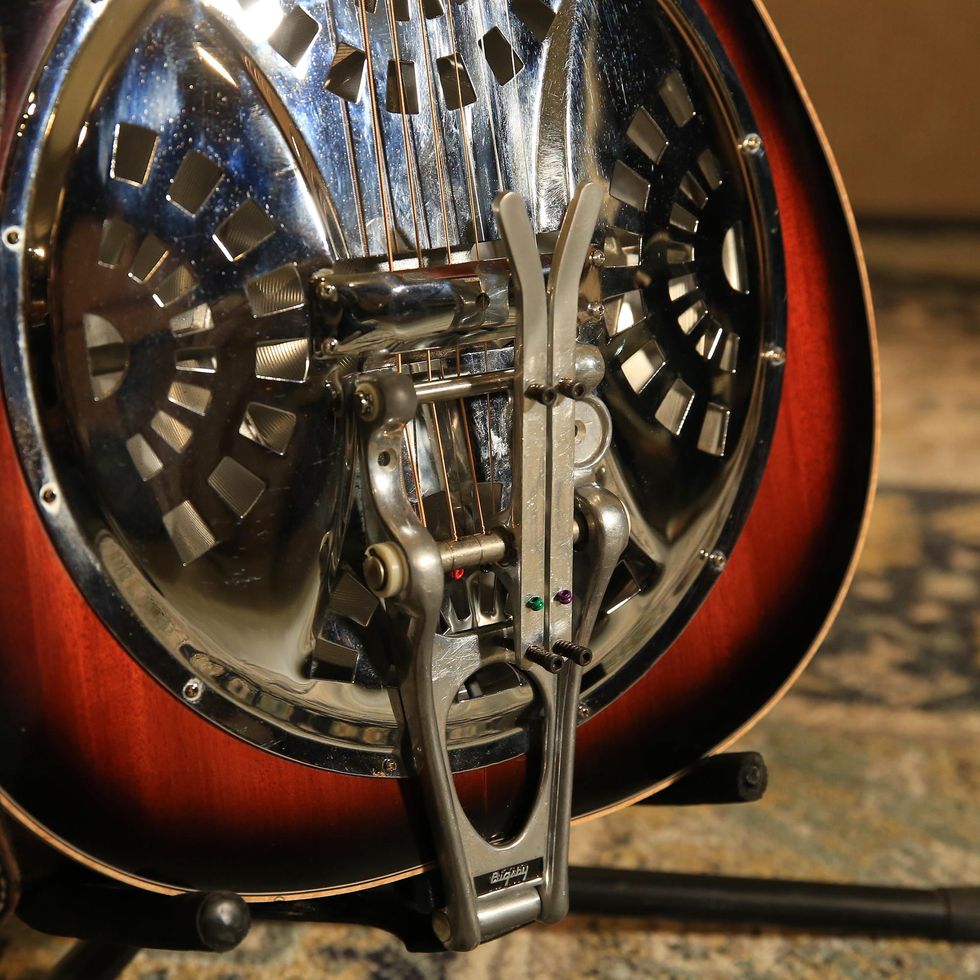
And now for something unusual: Harris has his PBR resonator tricked out with a Bigsby BP-12 palm pedal tailpiece.
Stompin’ Rompin’
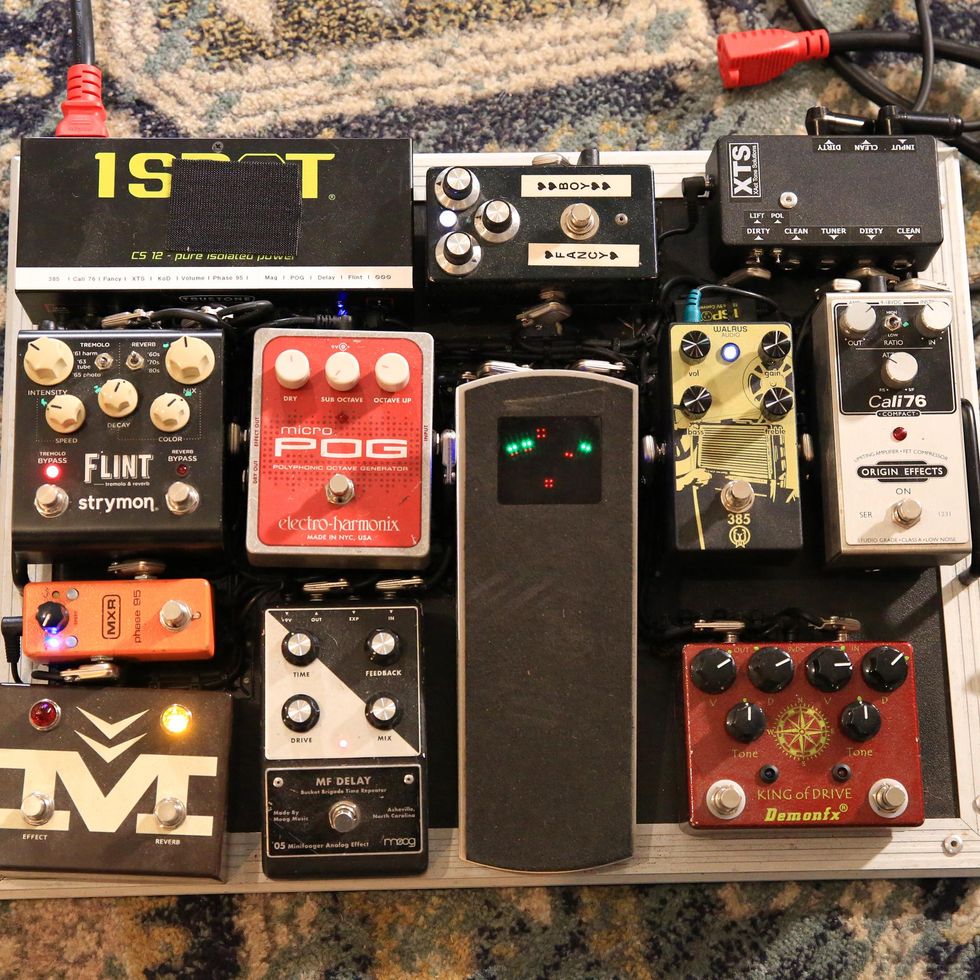
Harris’ pedalboard starts with a XTS custom pedalboard interface and routes to a Fancy Boy Klon clone, an Origin Effects Cali76 Compact compressor, a Walrus Audio 385 overdrive, a Demonfx King of Drive, a Shnobel Tone-modded Ernie Ball VP Jr. with a built-in TC Electronic PolyTune, a EHX Micro POG, an MXR Phase 95, a Moog MF Delay, and a Strymon Flint Tremolo & Reverb. All are powered by a Truetone 1Spot CS 12 and wired with Mogami cable with SP500 plugs. The board also houses a Magnatone reverb/tremolo controller.
Other elements of Harris’ gear include D’Addario American Stage Cables, BlueChip thumb picks, ProPik fingerpicks, Fender medium triangle plectrums, Dunlop .88 mm Flow picks, and Clayton thin triangles. He uses Dunlop slides: a 224 Heavy Wall Brass for resonator and a Derek Trucks signature for electric.
Sonic Vista
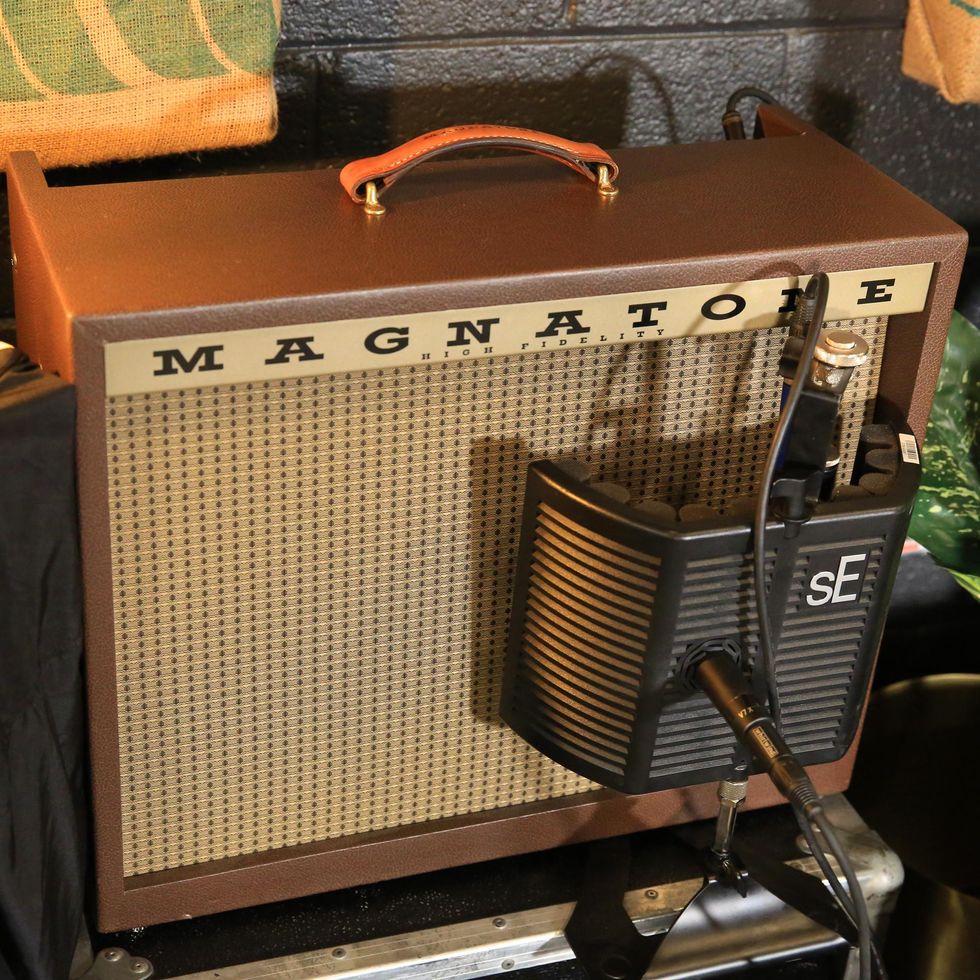
In the studio, Harris uses a lot of amps. On tour, however, he carries two, including this Magnatone Panoramic Stereo 2x10 combo. These come with Jensens, but Harris replaced those with a pair of Eminence Legends.
No. 2 for the Road
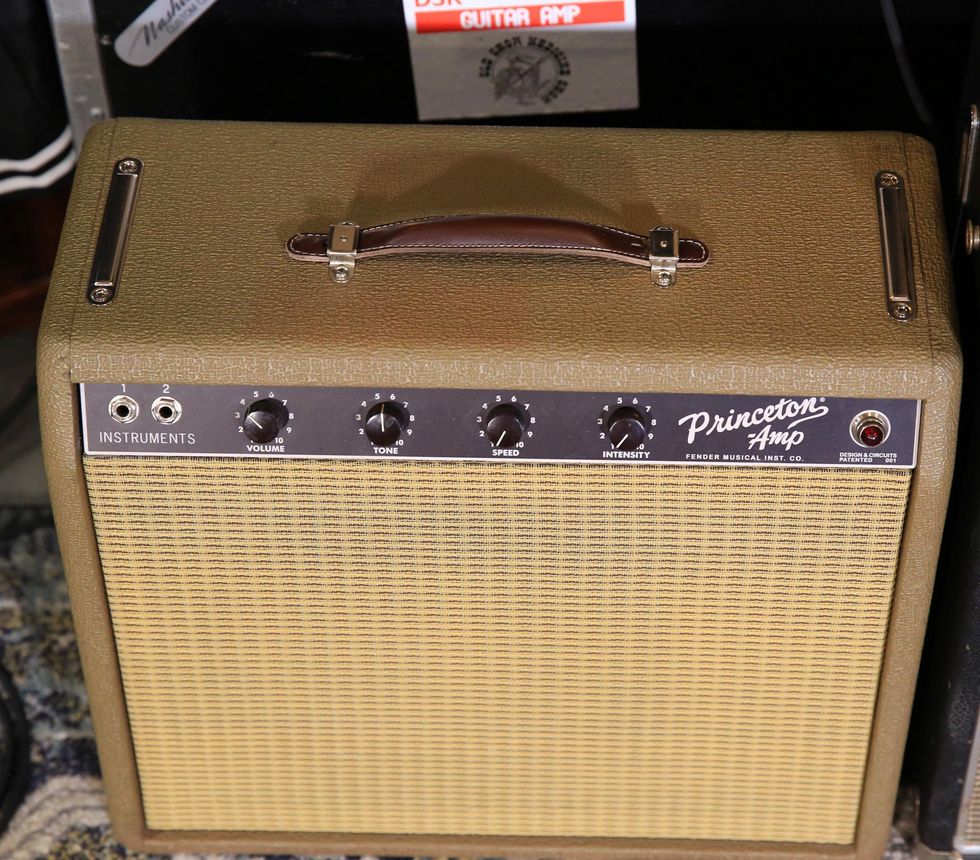
His other touring amp is a Fender Chris Stapleton Signature ’62 Princeton with an Eminence George Alessandro GA-64 12" speaker.
Wall of Sound
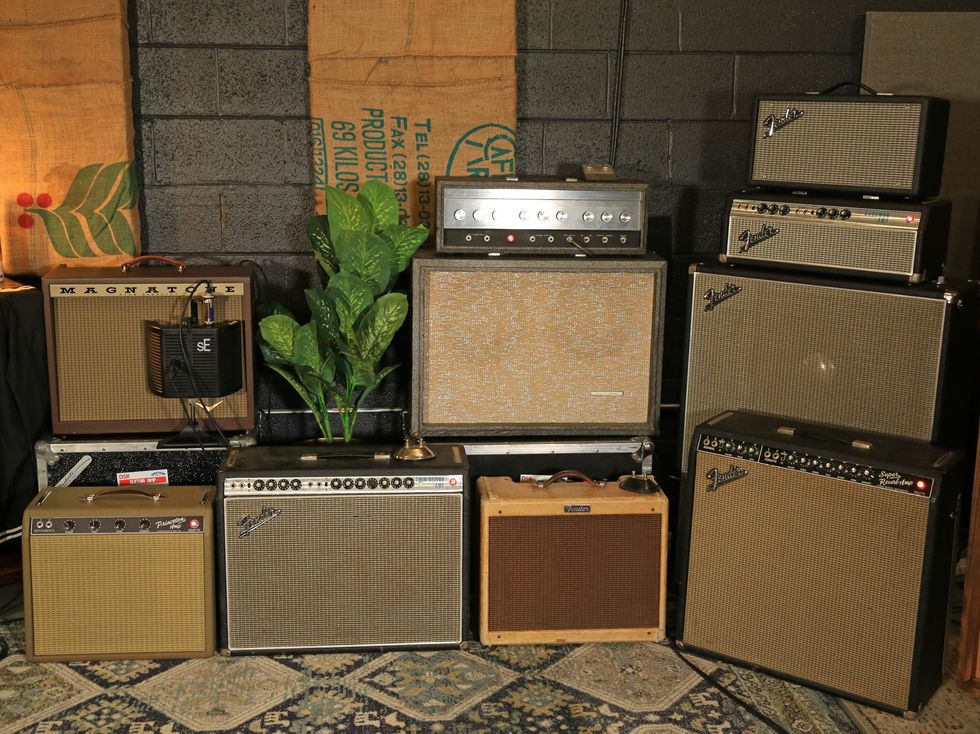
Here’s a look at the studio amps he keeps on tap—mostly classic-style Fenders with a little assist from a Silvertone and that Magnatone.






![Rig Rundown: AFI [2025]](https://www.premierguitar.com/media-library/youtube.jpg?id=62064741&width=1245&height=700&quality=70&coordinates=0%2C0%2C0%2C0)












 Shop Scott's Rig
Shop Scott's Rig













 Zach loves his Sovtek Mig 60 head, which he plays through a cab he built himself at a pipe-organ shop in Denver. Every glue joint is lined with thin leather for maximum air tightness, and it’s stocked with Celestion G12M Greenback speakers.
Zach loves his Sovtek Mig 60 head, which he plays through a cab he built himself at a pipe-organ shop in Denver. Every glue joint is lined with thin leather for maximum air tightness, and it’s stocked with Celestion G12M Greenback speakers.

















![Devon Eisenbarger [Katy Perry] Rig Rundown](https://www.premierguitar.com/media-library/youtube.jpg?id=61774583&width=1245&height=700&quality=70&coordinates=0%2C0%2C0%2C0)






